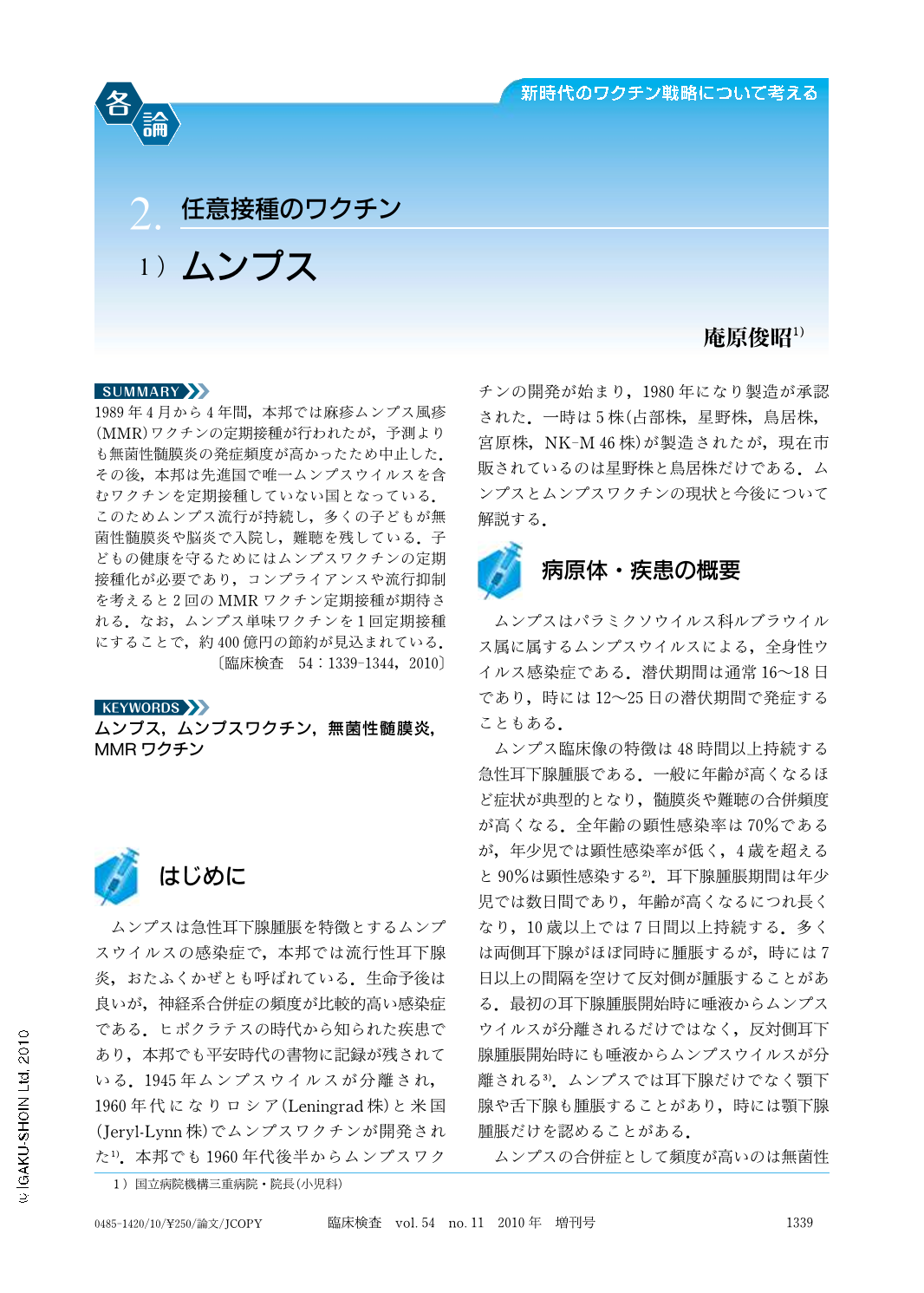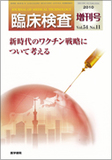Japanese
English
- 有料閲覧
- Abstract 文献概要
- 1ページ目 Look Inside
- 参考文献 Reference
1989年4月から4年間,本邦では麻疹ムンプス風疹(MMR)ワクチンの定期接種が行われたが,予測よりも無菌性髄膜炎の発症頻度が高かったため中止した.その後,本邦は先進国で唯一ムンプスウイルスを含むワクチンを定期接種していない国となっている.このためムンプス流行が持続し,多くの子どもが無菌性髄膜炎や脳炎で入院し,難聴を残している.子どもの健康を守るためにはムンプスワクチンの定期接種化が必要であり,コンプライアンスや流行抑制を考えると2回のMMRワクチン定期接種が期待される.なお,ムンプス単味ワクチンを1回定期接種にすることで,約400億円の節約が見込まれている.
In Japan, the MMR (measles-mumps-rubella) vaccine had been administered for four years since April, 1989. However, it was withdrawn because of the unexpectedly high incidence of aseptic meningitis that was detected. Since then, Japan is the only one country among the developed countries, where the mumps-virus-containing vaccine has not been administered routinely. Because of that, mumps prevalence has continued in Japan and a lot of children have been in the hospitals suffering from aseptic meningitis and encephalitis, and have experienced neural deafness as some of the sequelae of mumps. Routine vaccination with the mumps vaccine is necessary for adeguate child health care. Moreover, two doses of MMR vaccine should be employed for compliance and control of mumps. Economically, 40 billion yen would be saved every year, if mumps monovalent vaccine could be administered routinely.

Copyright © 2010, Igaku-Shoin Ltd. All rights reserved.


